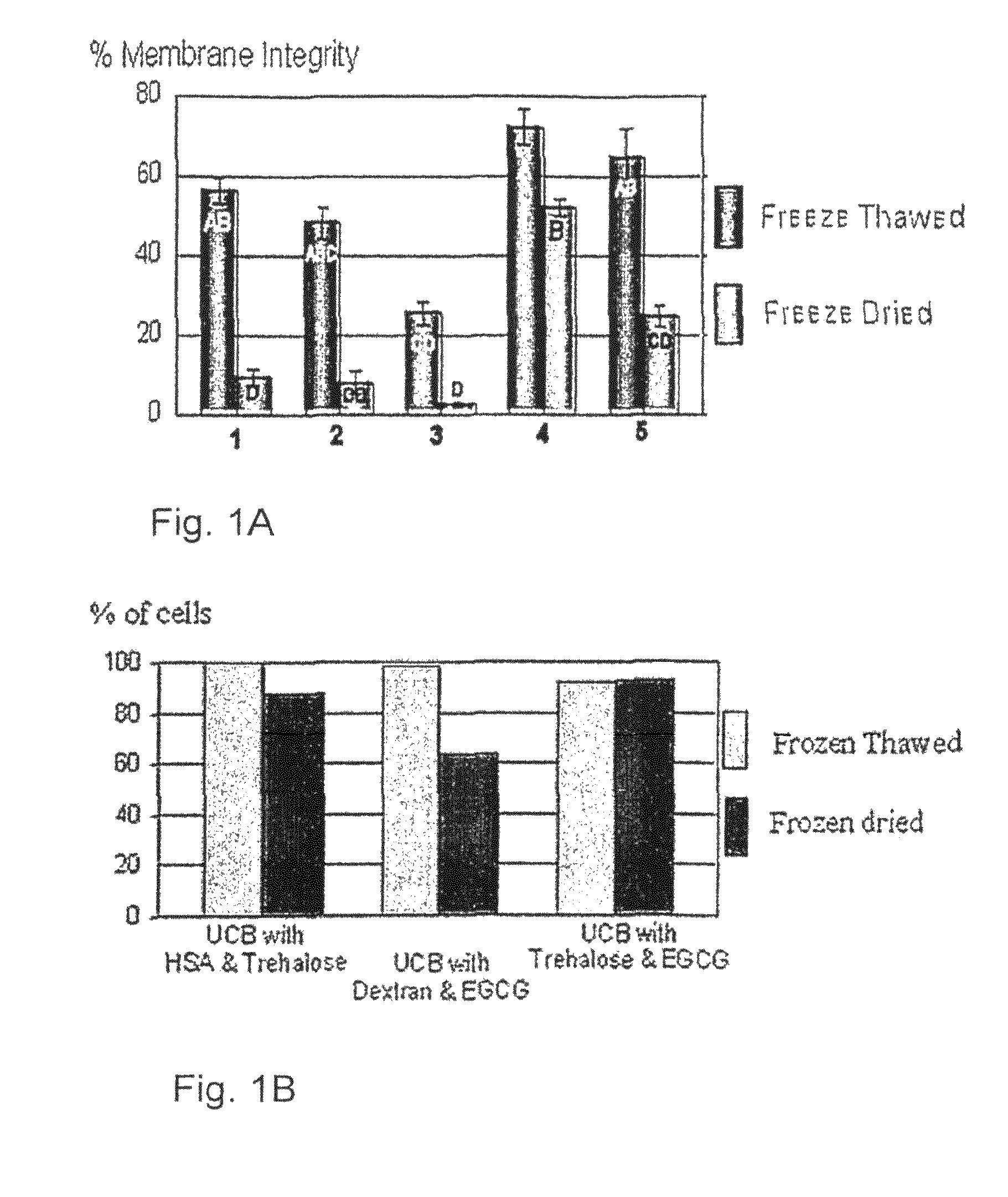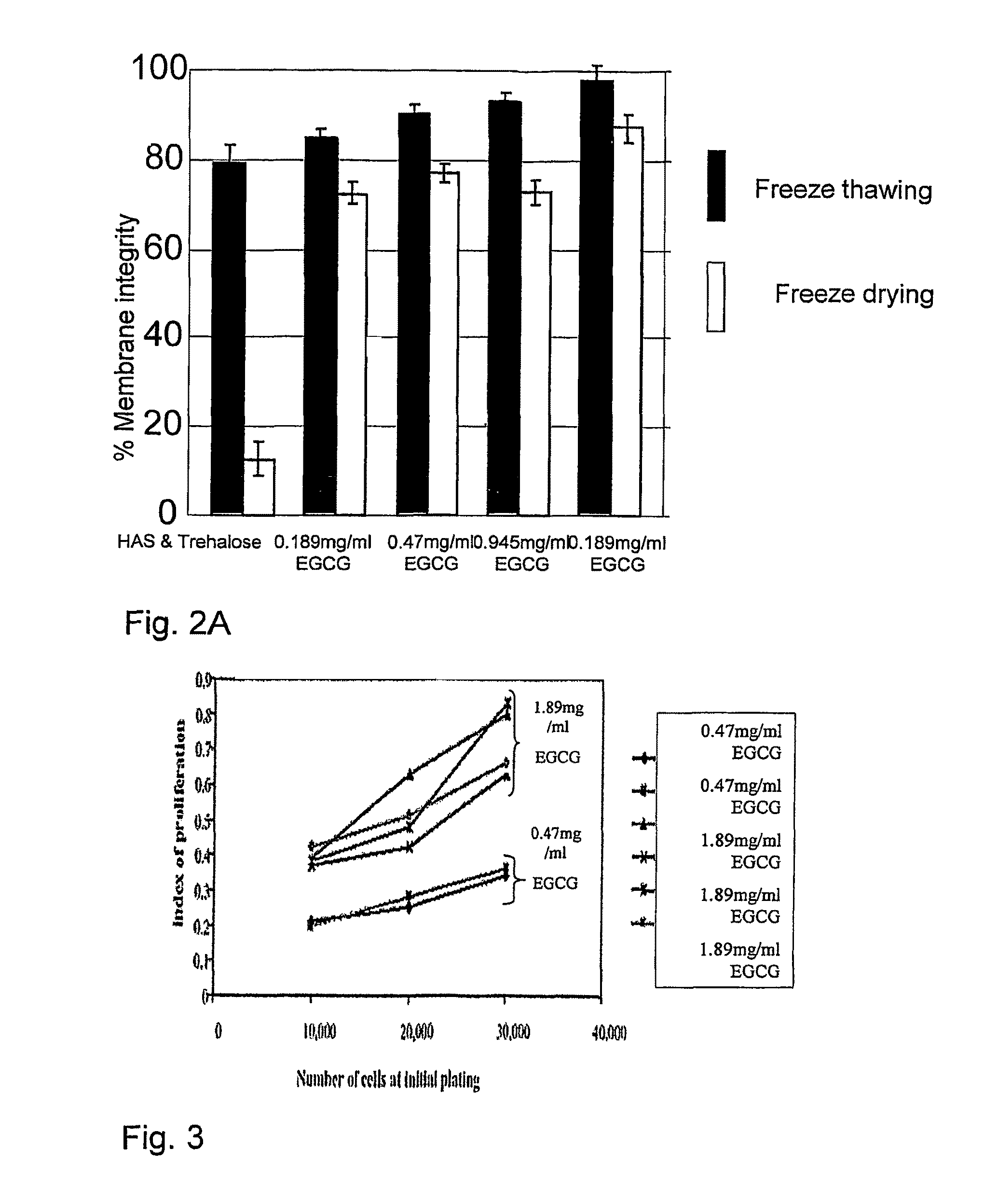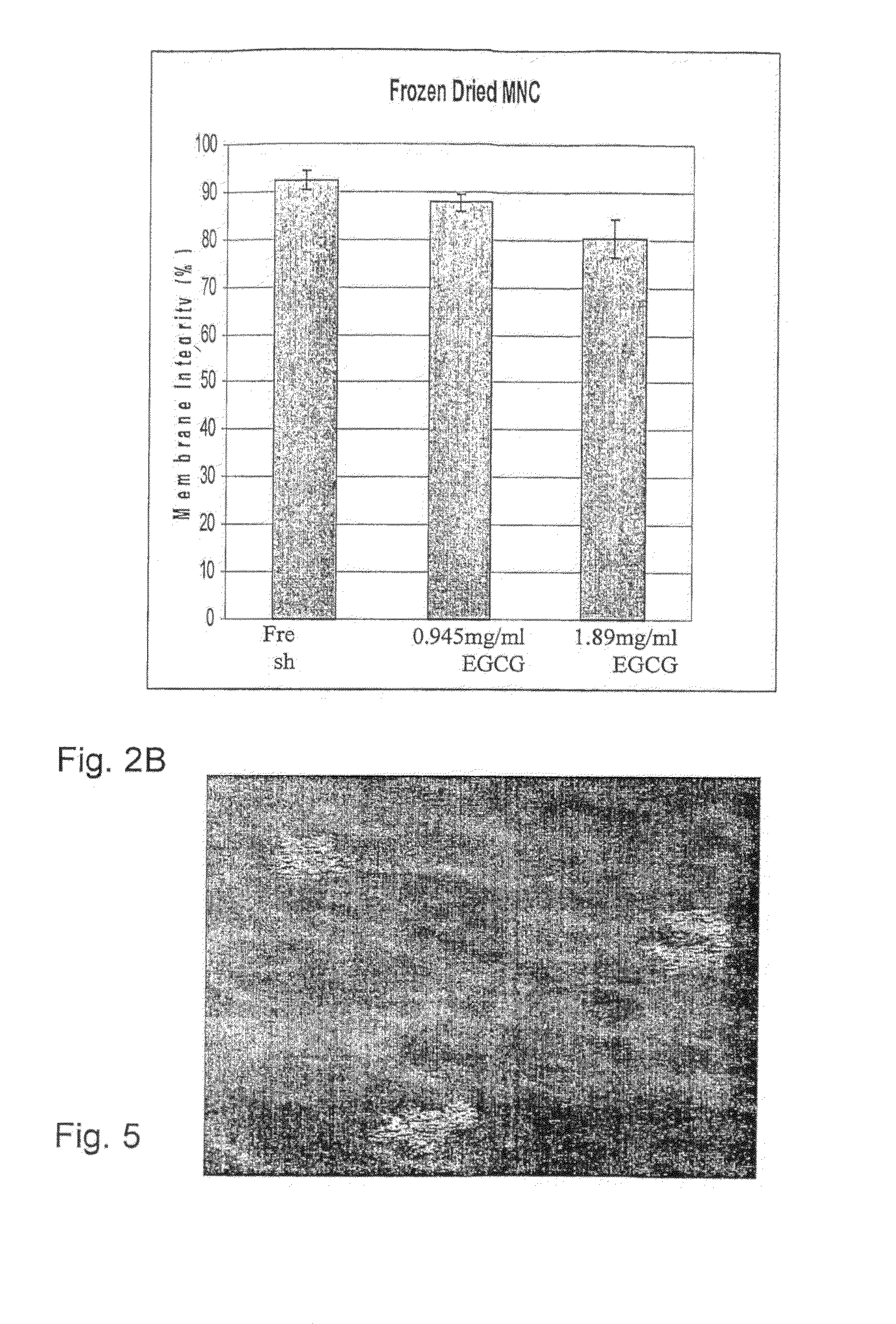Somatic cells for use in cell therapy
a cell therapy and somatic cell technology, applied in the field of cell therapy, can solve the problems of increasing the cost of long-term preservation, health hazards, and hazardous use of serum, and achieve the effects of increasing the survival rate of immune-compromised animals, maintaining their viability and functionality
- Summary
- Abstract
- Description
- Claims
- Application Information
AI Technical Summary
Benefits of technology
Problems solved by technology
Method used
Image
Examples
experiment b2
[0154]Samples of UCB (2.5 ml), prepared as described above, were suspended with a freezing solution composed of 0.1M trehalose and 0.945 mg / ml EGCG (Zhejiang Yixin Pharmaceutical Co., Ltd., China) in PBS (Ca++ and Mg++ free) or composed of 0.1M trehalose and 1.89 mg / ml EGCG (Zhejiang Yixin Pharmaceutical Co., Ltd, China) in PBS (Ca++ and Mg++ free). The samples were frozen using the MTG-516 device at a cooling rate of 5.1° C. / min. After freezing, samples were stored briefly in LN until put in the commercial lyophilizer (Labconco, USA) for 3 days. After which, samples were rehydrated by adding 2.4 ml of double distilled water at 37° C. The samples were counted for viability using SYBR14 / PI (Molecular Probes, USA) fluorescent dyes. Results are presented in FIG. 2B as the mean and standard deviation. Each rehydrated column represents a sample (one freeze dried test tube). For each samples at least 300 cells were counted in different fields.
experiment conditions
[0155]
Freezing Device:MTG-516Freezing Velocity:0.2 mm / secTemperature gradient (° C.)T = 4°→−10°→−40°→−70° C.Sample volume:2.5 mlStorage Temperature:LN TankLyophilization time:3 daysRehydration method:Addition of 2.4 ml DDW (37° C.)Survival assay:SYBR14 / PI (Molecular Probes,USA)
[0156]As seen in FIG. 2B, membrane integrity was very high in both EGCG concentrations, although the viability was a bit lower in the higher concentration. In light of the above, the 0.945 mg / ml EGCG solution was chosen for additional experiments.
experiment c
[0157]In this assay a freezing solution composed of 0.1M trehalose and either 0.47 mg / ml EGCG (×2.5) or 1.89 mg / ml EGCG (×10) in PBS were used. Sample's volume was 2.5 ml and samples were frozen and then lyophilized as described above. After being in the lyophilizer for 72 h, the samples were taken out and re-hydrated with 2.4 ml of DDW at 37° C. After re-hydration samples were assayed for CD3 using FACS (fluorescent-activated cell sorter) in accordance with the method described in Hulling et al. The Journal of Immunology 2003, 171: 4824-4829.
[0158]CD3 is a known cellular marker that is present in mature lymphocytes but not in other mononuclear cells, thus its presence indicates that mature lymphocytes are present in the sample.
[0159]Membrane integrity of the samples was evaluated before and after re-hydration using SYBR 14 and PI (Molecular Probes, USA). The membrane integrity and CD3 expression results are summarized in Table 1:
[0160]
TABLE 1Membrane Integrity and CD3 expression of...
PUM
| Property | Measurement | Unit |
|---|---|---|
| temperatures | aaaaa | aaaaa |
| temperatures | aaaaa | aaaaa |
| temperatures | aaaaa | aaaaa |
Abstract
Description
Claims
Application Information
 Login to View More
Login to View More - R&D
- Intellectual Property
- Life Sciences
- Materials
- Tech Scout
- Unparalleled Data Quality
- Higher Quality Content
- 60% Fewer Hallucinations
Browse by: Latest US Patents, China's latest patents, Technical Efficacy Thesaurus, Application Domain, Technology Topic, Popular Technical Reports.
© 2025 PatSnap. All rights reserved.Legal|Privacy policy|Modern Slavery Act Transparency Statement|Sitemap|About US| Contact US: help@patsnap.com



